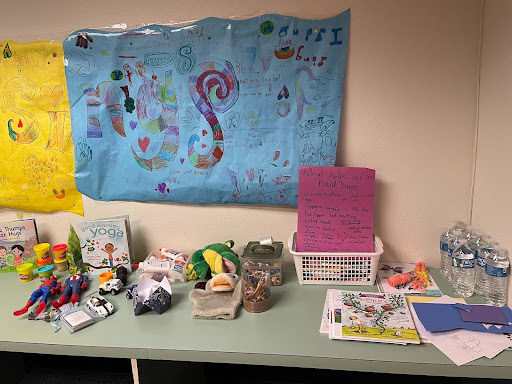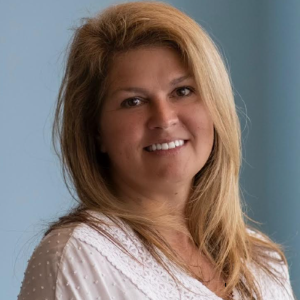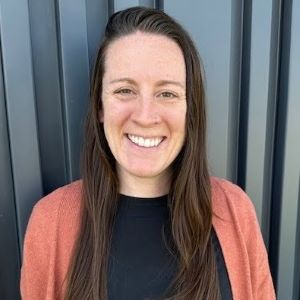Boulder Valley Strong: Navigating Grief and Trauma After the Marshall Fires
April 04, 2025
Supporting Students Through Grief and Trauma: BVSD’s Response to the Marshall Fires
Welcome to part three of a four-part blog series exploring how Boulder Valley School District in Colorado navigated natural disasters while building community resilience. The series will examine crisis response strategies, support systems, and leadership approaches during unprecedented challenges—providing valuable insights for districts preparing for or currently facing similar situations.
In the aftermath of the Marshall Fires, many students within the Boulder Valley School District (BVSD) faced not only physical destruction but also deep emotional challenges. The fires caused significant grief, loss, and trauma, affecting the mental health and well-being of our students in profound ways. As a school district, our priority was not only to ensure their safety but also to provide emotional and psychological support to help them heal.
Building on our previous post, let’s explore the strategies and systems BVSD put in place to support students during this difficult time.
Immediate Counseling and Trauma Support
As soon as it was safe to do so, BVSD’s Trauma Response Team sprang into action. The team mobilized counselors and mental health professionals who met with students directly impacted by the fires. We made sure these services were available in both schools and the district’s central office, creating spaces for students to talk openly about their experiences. Providing these spaces for conversation was crucial in helping students process their emotions and begin their healing journeys.
Creating Safe Spaces at Schools: Peer and Family Support
School environments can often feel overwhelming after a crisis. We recognized the need for spaces where students could retreat and feel safe. Working closely with school leaders, we created quiet, supportive spaces within schools. These areas were designed to give students a break from the classroom, offering them a refuge where they could relax and engage with mental health professionals on a one-on-one or small group basis. These spaces became essential in providing emotional relief during moments of stress and anxiety.
We learned that connecting with others who were experiencing similar grief helped normalize students’ feelings and created a sense of community.
Additionally, a powerful aspect of healing came from peer support. We learned that connecting with others who were experiencing similar grief helped normalize students’ feelings and created a sense of community. To foster this connection, BVSD created peer support groups and utilized trauma rooms and wellness centers in our schools. Students could engage with one another, share their stories, and find solidarity in their experiences. The sense of shared understanding and empathy among peers was invaluable in helping students cope with their emotions.
Supporting students' families was also a key part of our approach. We recognized that parents and caregivers needed guidance on how to help their children navigate the aftermath of trauma. BVSD offered resources that provided insight into how to talk to children about the fires, recognize signs of trauma, and support family well-being. We also introduced Let’s Connect Caregiver Support Groups, where parents and caregivers could come together, share experiences, and receive emotional support.
Balancing Academic Recovery with Emotional Support Needs

It’s no secret that trauma can significantly impact a student’s ability to focus and engage with their academic work. At BVSD, we knew we had to find a balance between addressing emotional needs and maintaining academic progress. We worked hard to create an environment where students felt emotionally supported while still being able to continue their studies at a manageable pace.
Instead of pushing students immediately back into the full rigor of academic demands, BVSD adjusted its curriculum to meet students where they were emotionally. We focused on providing flexible and gentle transitions back into the classroom, ensuring that students could engage with their schoolwork at a pace that felt comfortable.
We also integrated Social-Emotional Learning (SEL) practices into our curriculum. These lessons helped students work through their feelings, better understand how to cope with grief, anxiety, and fear, and begin building resilience. This approach not only supported emotional recovery but also provided students with lifelong skills in emotional regulation and self-awareness.
Some students returned to regular academic work gradually, while others continued to focus on emotional recovery with the support of our trauma response team. This flexibility allowed us to meet students’ academic and emotional needs without overwhelming them.
Gradual Academic Re-entry
For students who were most deeply affected, we implemented a phased approach to returning to full academic tasks. Recognizing that some students might struggle with concentration or feel triggered by normal school activities, we offered flexible options. Some students returned to regular academic work gradually, while others continued to focus on emotional recovery with the support of our trauma response team. This flexibility allowed us to meet students’ academic and emotional needs without overwhelming them.
An Evolved Strategy: From Mental Health Support to Staff Training and Well-Being
The Marshall Fires, along with other crises BVSD has navigated, have significantly shaped how our Trauma Response Team operates moving forward. As a district, we’ve learned valuable lessons about what works well and where we can improve our responses. Here’s a look at how our strategy has evolved over time:

- BVSD has strengthened its partnerships with community mental health professionals. We recognize that supporting the emotional well-being of students requires a collaborative effort that extends beyond just the school walls. One example of this collaboration came when the Jewish Community Center (JCC) quickly mobilized more than 200 therapists who offered up to ten free therapy sessions for individuals and families. By tapping into these resources, BVSD was able to expand its support network and ensure that families and students had access to the mental health services they needed.
- We’ve made it a priority to offer more professional learning opportunities for staff on trauma-informed care. This training has ensured that all BVSD staff are equipped with the knowledge and tools to recognize the signs of trauma and respond appropriately to students’ needs.
- Recognizing that our staff members were also impacted by the fires, we introduced AcuDetox, a five-point acupuncture treatment used worldwide to help individuals recover from the emotional and physical effects of trauma. AcuDetox has proven to be a valuable tool in promoting resilience and reducing symptoms such as anxiety, depression, and PTSD. The response has been overwhelmingly positive, with 97% of staff reporting that they would like to receive this service again, and 87% saying it helped reduce their stress levels.
In our next and final post, BVSD Superintendent Rob Anderson will share practical leadership advice from his superintendent's perspective, balancing honesty with compassion.
Read parts one and two of this blog series:



